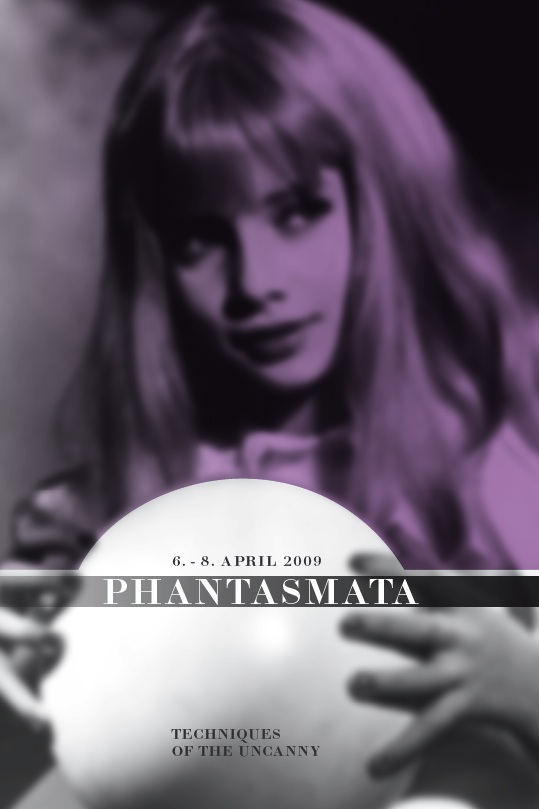Workshop, ICI Berlin
6-8 April 2009
This conference is organized within the frame of the Berlin Institute for Cultural Inquiry’s current core project Tension/Spannung, in collaboration with the Friedrich Schlegel Graduate School of Literary Studies, Freie Universität Berlin. It aims to gather scholars and artists from different disciplines and backgrounds to engage in a three-day interdisciplinary workshop, where participants are expected to present their papers (15 minutes).
From the 'Uncanny-ICI-Berlin' website we can get this introduction for the concepts they are going to discuss during this workshop:
The concept of the ‘uncanny' is one of the most floating in contemporary aesthetics. The ‘uncanny' delineates a strange proximity between the known and the unknown, either as something familiar presenting itself under an extraneous shape, or as something extraneous revealing an element of familiarity in its features.(,,,) From this point of view, the uncanny is related to scientific paradigms and epistemological practices, insofar as these define what a given cultural context interprets as natural or un-natural, or rather super-natural.(,,,)The epistemological model of critique produces a number of techniques in the sense of both structured thought and scientific practices. In the ‘culture of critique', the subject is split, as reflected in the double genitive in the expression ‘subject of observation'. This causes a constant abstraction from individual experience to a common and collective level. We therefore propose to interpret the uncanny as a model for understanding the interrelation between possible and impossible, norm and deviation.
Jaime Cuenca is a philosopher involved in the project about zombies developed by the artists Iratxe Jaio and Klaas van Gorkum and produced by consonni. He made a conference during the Zombi Seminar in Barakaldo making a clever and not simple relation between the metaphor of zombie and the behavior of the consumer. Soon we are going to publish a book with the diffrent thoguths of this art project where is going to appear de Jaime Cuenca’s contribution.
In Berlin, Wednesday, April 8th, he is going to take part in this workshop with a paper called:
The Political Potential of the Uncanny: The Zombie as a Metaphor for the Consumer. Here is the abstract pf the coneference:
Ancient monsters lived beyond the frontiers of civilization: in the wood outside the polis or in the terra incognita of the maps. When the last remains of wild outside were explored and the world became a large interior (Sloterdijk, 2005), the monstrous chaos moved inside and settled at home. This tension within the modern interior is the uncanny. The ancient monster was a natural anomaly that was supposed to show a message of the gods. The uncanny also shows something to us: this part of ourselves we are afraid of recognizing as our own. The uncanny awakens the suspicion that chaos does not come from outside, but from the center of order and is perhaps its very foundation. This suspicion has a large political potential. I will try to show it on the example of the zombie. The zombie is one of the most present figures of the uncanny in the current collective imaginary. Since its reinterpretation by George A. Romero (Night of the Living Dead, 1968), its presence in popular culture has steadily increased. This is not a coincidence, as Romero's zombie embodies our current fears much better than any previous version. Before 1968, cinema showed zombies as dead brought back to life by a villain who uses them as slaves. Romero turned zombies into insatiable cannibals deprived of consciousness that bring about an apocalyptical catastrophe. From then on, they can be satisfactorily described by the expression ‘unconscious consumption'.
By developing this two defining features (consumption and lack of consciousness), I will try to show why the zombie is a monstrous metaphor of ourselves. I will relate it to the main themes of Zygmunt Bauman's analysis of consumerism: the obsolescence of market products, the desire as driving force of consumption and the failed promises of the consumer market. The tension that characterizes the hyper-stimulated consumer in the society of boredom (Svendsen, 2006) is projected on the tension between life and death, ultra-violence and apathetic inactivity that defines the zombie. I will illustrate the paper with a practical example of how art can work with the political potential of the zombie: the project Stay Inside, close windows and doors (2008) by the artists Iratxe Jaio and Klaas van Gorkum, which included two zombie walks through shopping centers in Utrecht (Holland) and Barakaldo (Spain).
All the absstract and the whole programm:
